Address
AVSSO 2242 SE 171st AVE Portland Oregon USA 97233
Work Hours
Monday to Friday: 7AM - 7PM
Weekend: 10AM - 5PM
Address
AVSSO 2242 SE 171st AVE Portland Oregon USA 97233
Work Hours
Monday to Friday: 7AM - 7PM
Weekend: 10AM - 5PM

Discover the power of conscious breathing with our exploration into breathwork techniques that can be practiced solo. Breathing exercises have been shown to reduce stress, improve mental clarity, and enhance overall well-being.
By incorporating these simple yet effective breathing exercises into your daily routine, you can experience profound benefits. Our article will guide you through seven breathwork techniques designed to help you relax, focus, and rejuvenate.
Practicing these techniques individually allows you to take control of your mental and physical health. As we delve into the world of breathwork, you’ll learn how to harness the power of your breath to improve your quality of life.
The science behind breathwork is rooted in its profound impact on our nervous system. By understanding how breathing affects our body and mind, we can better appreciate the benefits of various breathwork techniques.
Breathing is not just a basic bodily function; it’s closely linked to our nervous system’s functioning. The way we breathe can significantly influence our autonomic nervous system, which controls involuntary actions of the body.
The autonomic nervous system consists of two main branches: the sympathetic and parasympathetic nervous systems. The sympathetic nervous system is often referred to as the “fight or flight” response, activated during stress. In contrast, the parasympathetic nervous system promotes relaxation and restoration. Breathwork techniques can help balance these responses.
Efficient breathing enhances oxygen supply to the brain, improving cognitive function and overall brain health. Techniques that promote deep, rhythmic breathing can increase oxygenation and potentially boost mental clarity and focus.
Breathwork not only affects our physiological state but also has a profound impact on our mental and emotional wellbeing. By practicing breathwork, we can cultivate a stronger mind-body connection, leading to greater self-awareness and emotional regulation.
The practice of breathwork has been shown to have a positive impact on various aspects of health, from respiratory function to stress management. By committing to regular breathwork practice, individuals can experience a range of benefits that enhance their overall wellbeing.
Breathwork techniques can lead to significant improvements in physical health. Some of the key advantages include:
Regular breathwork practice can strengthen the diaphragm and improve lung capacity, leading to more efficient oxygen intake. This can be particularly beneficial for individuals with respiratory conditions such as asthma.
Studies have shown that breathwork can help lower blood pressure and improve cardiovascular function. By reducing stress and promoting relaxation, breathwork can contribute to a healthier heart.
In addition to physical benefits, breathwork also offers numerous mental and emotional advantages. These include:
Breathwork techniques are highly effective in managing stress and anxiety. By focusing on the breath, individuals can calm the mind and reduce feelings of overwhelm.
Regular practice of breathwork can improve concentration and mental clarity. This can be particularly beneficial for individuals looking to enhance their productivity and mental performance.
Committing to a regular breathwork practice can have long-term effects on overall wellbeing. As individuals continue to practice, they may experience sustained improvements in both physical and mental health, leading to a better quality of life.
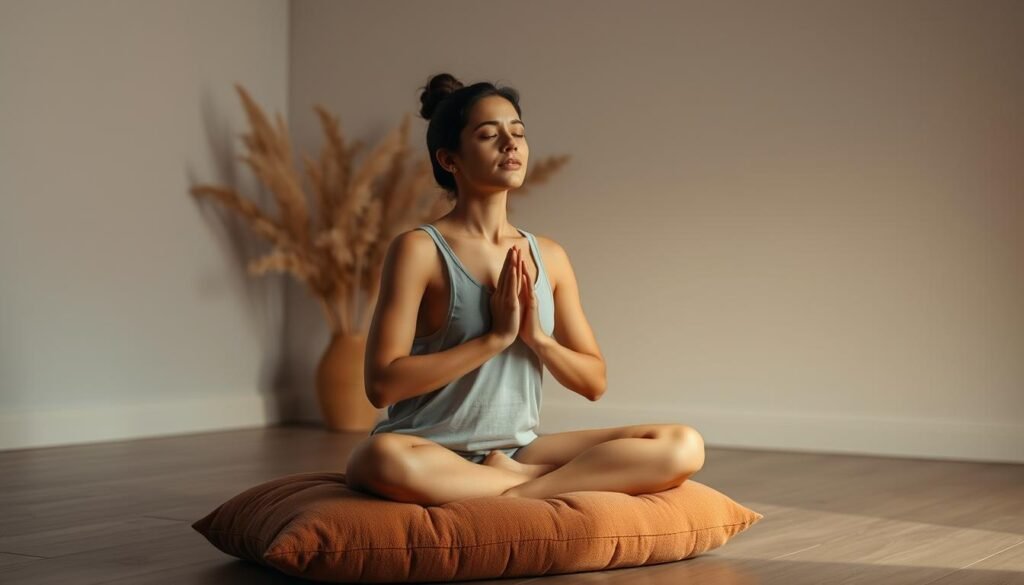
To start your breathwork journey, creating a conducive practice space is essential. This dedicated area will help you focus and achieve the full benefits of breathwork techniques.
Creating a comfortable environment is crucial for an effective breathwork practice. Choose a quiet, clean, and clutter-free space where you can sit or lie down without distractions. Consider using a meditation cushion or a yoga mat to support your posture.
While breathwork requires minimal equipment, certain props can enhance your practice. Use a bolster or pillow to support your back or legs if needed. Some practitioners also find eye masks or blankets helpful for creating a calming atmosphere.
The timing of your breathwork practice can significantly impact its effectiveness. Consider the following factors when scheduling your sessions:
Both morning and evening practices have their benefits. A morning session can help set a positive tone for the day, while an evening practice can aid in relaxation and prepare your body for sleep.
For beginners, starting with shorter sessions (5-10 minutes) and gradually increasing the duration as you become more comfortable with the techniques is recommended. Listen to your body and adjust the length of your practice accordingly.
For those new to breathwork, understanding the foundational techniques is crucial. Breathwork encompasses a variety of methods, but certain principles remain consistent across different practices.
Basic breathing patterns form the core of most breathwork techniques. Diaphragmatic breathing, for instance, engages the diaphragm, promoting deeper and more efficient oxygen intake. This type of breathing is fundamental to many breathwork practices.
Despite the variety of breathwork techniques, common elements include conscious breathing, relaxation, and focus. These elements work together to help practitioners achieve a state of calm and heightened awareness.
Preparation is key to a successful breathwork practice. This involves both physical and mental preparation.
Find a comfortable position, either sitting or lying down, where you can relax without distraction. Proper posture is essential to facilitate unobstructed breathing.
Clear your mind of distractions and focus on your breath. Meditation or simply paying attention to your breathing can help calm the mind and prepare it for the practice.
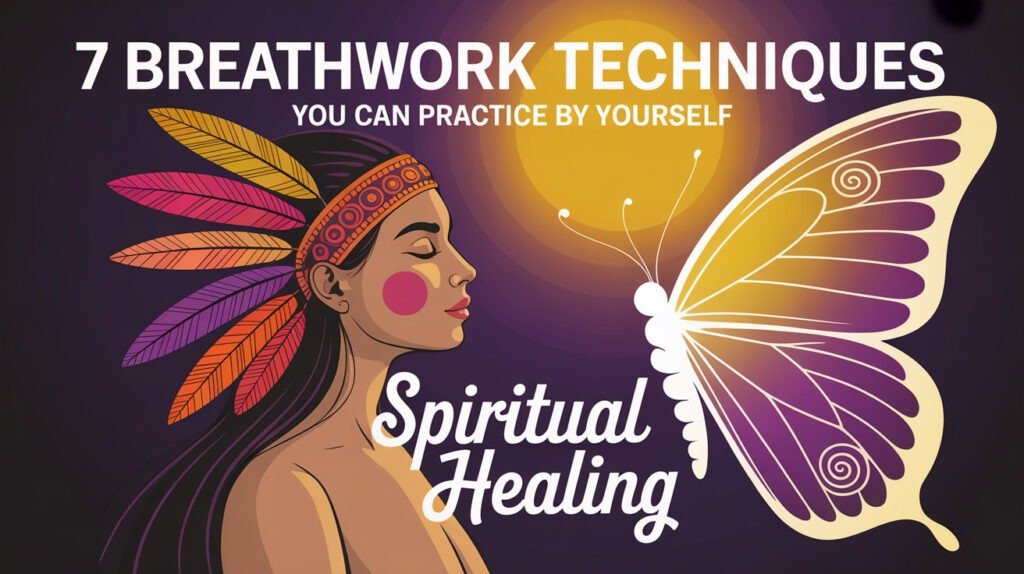
Box breathing, also known as the 4-4-4-4 technique, is a simple yet powerful method for achieving relaxation and focus. This technique involves breathing in for a count of four, holding the breath for a count of four, exhaling for a count of four, and then holding the breath again for a count of four.
To practice box breathing effectively, it’s essential to follow a few key steps. First, we need to establish a comfortable posture.
We recommend sitting comfortably with your back straight, feet planted firmly on the ground, and hands placed gently on your lap. This posture helps in maintaining an open airway, facilitating easier breathing.
To maintain the 4-4-4-4 rhythm, we can either count silently to ourselves or use a metronome. The key is to maintain a steady, consistent pace that feels natural and relaxed.
Box breathing offers numerous benefits, including reduced stress and anxiety, improved focus, and enhanced overall well-being. By incorporating this technique into our daily routine, we can better manage stress and improve our mental clarity.
Box breathing is versatile and can be used in various situations.
During periods of high stress or anxiety, box breathing can serve as a quick and effective tool to calm the mind and body. By focusing on the breathing pattern, we can distract ourselves from stressful thoughts and emotions.
Athletes and performers often use box breathing to improve their focus and composure under pressure. This technique can help in achieving a state of calm focus, enhancing performance in high-pressure situations.
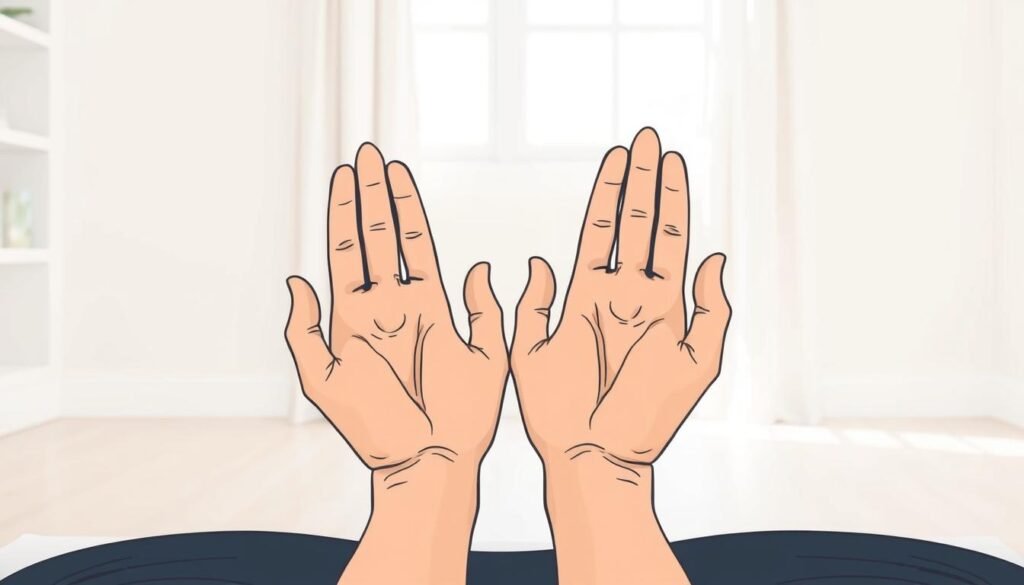
Mastering diaphragmatic breathing is a fundamental step in enhancing your respiratory health and overall wellbeing. Diaphragmatic breathing engages your diaphragm, the muscle that separates your chest and abdominal cavities, to improve oxygenation and reduce stress.
To practice diaphragmatic breathing correctly, you can start in either a lying down or seated position.
Lying on your back with your knees bent and feet flat on the floor can help you relax and focus on your breathing. Place one hand on your belly and the other on your chest to monitor your breathing pattern.
Sitting comfortably with your back straight, you can place one hand on your abdomen and the other on your chest. This position can help you maintain good posture while practicing diaphragmatic breathing.
One common mistake is breathing shallowly into the chest instead of deeply into the diaphragm. Another is tensing up or forcing the breath, which can lead to discomfort or dizziness.
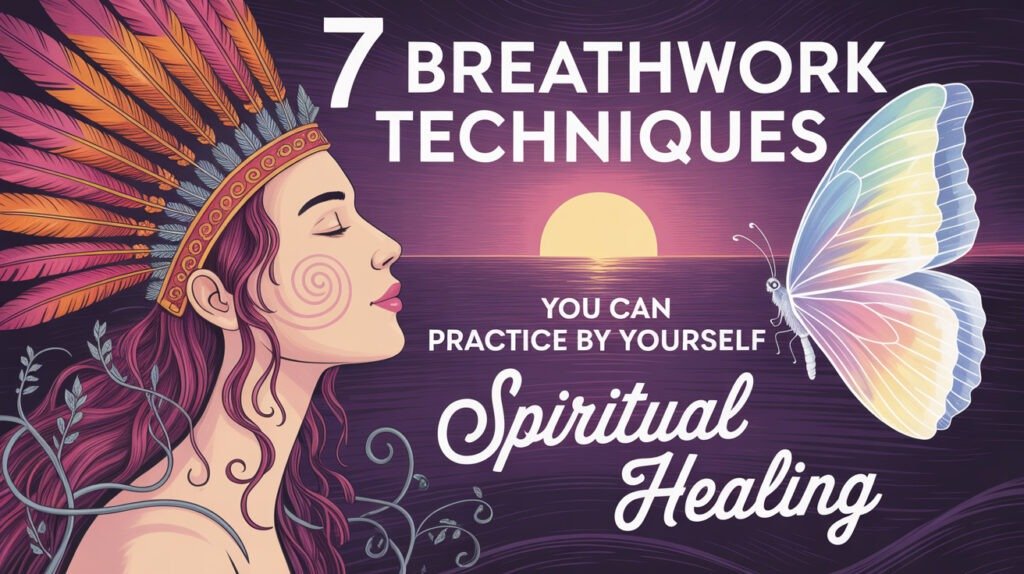
To build your diaphragmatic breathing practice, start with short sessions and gradually increase the duration.
Begin with 5-10 minute practice sessions and gradually increase to 20-30 minutes as you become more comfortable with the technique. Focus on expanding your belly outward with each inhale, allowing your diaphragm to drop and your lungs to fill fully.
| Practice Duration | Breathing Technique | Expected Benefits |
|---|---|---|
| 5-10 minutes | Diaphragmatic Breathing | Reduced stress, improved oxygenation |
| 20-30 minutes | Diaphragmatic Breathing with focus on exhale | Enhanced relaxation, better sleep quality |
By mastering diaphragmatic breathing, you can significantly enhance your respiratory function, reduce stress, and improve your overall wellbeing.
The 4-7-8 breathing technique, also known as the “natural tranquilizer,” has gained popularity for its simplicity and effectiveness in promoting relaxation. This method, developed by Dr. Andrew Weil, is based on the principle of conscious breathing to calm the nervous system.
Dr. Andrew Weil, a renowned integrative medicine expert, introduced the 4-7-8 breathing technique as a simple yet powerful method for achieving relaxation and improving sleep quality. This technique is rooted in yogic practices and has been adapted for modern use.
To practice the 4-7-8 breathing technique, follow these steps:
The technique involves a three-phase breathing pattern: inhaling, holding, and exhaling. This pattern helps slow down your heart rate and calm your mind.
For optimal results, practice the 4-7-8 breathing technique twice a day, ideally at bedtime and upon waking.
Research has shown that the 4-7-8 breathing technique can significantly improve sleep quality and reduce anxiety levels. By slowing down your heart rate and promoting relaxation, this technique helps prepare your body for restful sleep.
| Benefits | Description |
|---|---|
| Improved Sleep | Enhances sleep quality by promoting relaxation |
| Reduced Anxiety | Calms the nervous system, reducing anxiety levels |
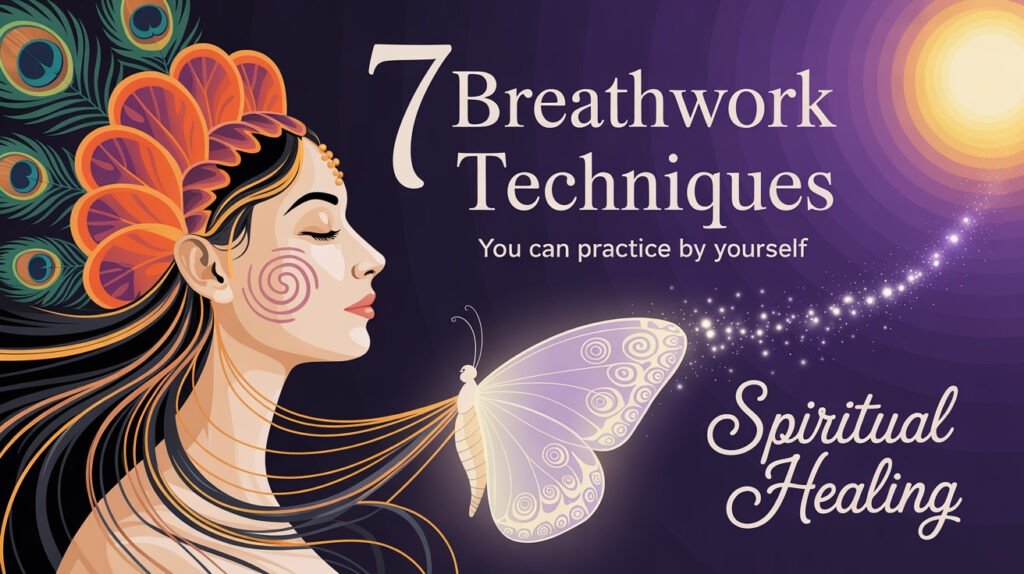
Alternate nostril breathing, known as Nadi Shodhana in yogic traditions, is a powerful technique for balancing the body’s energy. This ancient practice is rooted in the belief that the breath is a key factor in influencing the body’s energy channels.
Nadi Shodhana is more than just a breathing exercise; it’s a method to purify the nadis (energy channels) in our body. By balancing the breath, we can achieve a state of calm and focus.
The practice of Nadi Shodhana is deeply rooted in yogic philosophy, aiming to balance the ida and pingala nadis, which correspond to the sympathetic and parasympathetic nervous systems.
To practice alternate nostril breathing, one must first learn the correct hand positioning, known as Vishnu Mudra.
The Vishnu Mudra involves folding the index and middle fingers towards the palm, leaving the thumb, ring finger, and pinky free. This hand gesture is used to close the nostrils alternately.

While the traditional technique is effective, it can be adapted for different experience levels to make it more accessible.
For beginners, starting with a simplified version that involves slower and more relaxed breathing can be beneficial. As one becomes more comfortable, they can gradually move to the traditional technique.
As a practice that merges breathing techniques with cold exposure, the Wim Hof method has attracted significant attention. This method, developed by Wim Hof, involves specific breathing patterns and cold exposure to potentially enhance physical and mental well-being.
The Wim Hof method is based on the concept that controlled breathing and cold exposure can influence our autonomic nervous system, potentially leading to various health benefits. Research has shown that this method can increase the release of certain neurotransmitters and hormones, which may contribute to its effects.

The breathing technique involves a series of deep, rapid breaths followed by a brief period of breath retention. This pattern is believed to help increase oxygenation of the body and prepare it for cold exposure.
To practice the 30-deep breaths technique, start by taking 30 rapid, deep breaths. This involves inhaling fully and exhaling fully without pause between breaths.
After completing the 30 breaths, hold your breath for a short period. This phase is crucial for potentially inducing the physiological responses associated with the Wim Hof method.
While the Wim Hof method can be beneficial, it’s essential to consider safety. Individuals with certain health conditions, such as cardiovascular diseases or epilepsy, should consult a healthcare professional before starting this practice.
People with severe health conditions, pregnant women, and individuals with a history of certain medical conditions should avoid the Wim Hof method or consult a healthcare provider before attempting it.
| Category | Guideline | Precaution |
|---|---|---|
| Health Conditions | Cardiovascular diseases, epilepsy | Consult a healthcare professional |
| Pregnancy | Pregnant women | Avoid or consult a healthcare provider |
| Medical History | History of certain medical conditions | Consult a healthcare provider |
The Breath of Fire technique, a cornerstone of Kundalini yoga practice, offers a dynamic way to boost energy and vitality. This rapid, rhythmic breathing method is designed to stimulate the nervous system, detoxify the body, and prepare the mind for meditation.
Breath of Fire is deeply rooted in Kundalini yoga, a spiritual style of yoga that focuses on the release of energy through the body. This technique is believed to awaken the dormant energy at the base of the spine, promoting spiritual growth and self-awareness.
To practice Breath of Fire, start by sitting comfortably with your back straight. Begin with a few deep breaths, then initiate the rapid breathing pattern, inhaling and exhaling through your nose with equal emphasis. The breath should be passive, with the diaphragm doing the work.
A key element of Breath of Fire is the abdominal pumping action. As you breathe in and out, your navel should move in towards the spine and then out, creating a pumping motion. This action stimulates the abdominal organs and helps to detoxify the body.
Start with a slow pace and gradually increase your speed as you become more comfortable with the technique. It’s essential to maintain a consistent rhythm and focus on the sensation of the breath moving in and out of the body.
While Breath of Fire is generally safe, there are certain conditions under which it should be practiced with caution or avoided altogether.
| Condition | Precaution |
|---|---|
| Pregnancy | Avoid Breath of Fire, as it may cause undue stress on the body. |
| High Blood Pressure | Practice with caution, as rapid breathing can affect blood pressure. |
| Epilepsy | Consult a healthcare professional before practicing Breath of Fire. |
As with any new exercise or breathing technique, it’s crucial to listen to your body and consult with a healthcare professional if you have any concerns.
As we dive deeper into breathwork practices, it’s common to encounter challenges that can hinder our progress. Breathwork, like any other practice, requires patience, dedication, and understanding of how to overcome obstacles.
Some individuals may experience discomfort or dizziness during breathwork. It’s essential to recognize whether these sensations are normal or concerning.
Normal sensations may include feelings of relaxation or lightheadedness. However, if you experience severe dizziness, pain, or shortness of breath, you should stop the practice immediately.
To adjust your practice, try slowing down your breathing rate or modifying your posture. Listening to your body and making necessary adjustments is crucial.
Consistency is key to benefiting from breathwork. Establishing a routine can help you stay on track.
Start by setting achievable goals and scheduling your practice sessions. Consistency will help you experience the full benefits of breathwork.
| Method | Description | Benefits |
|---|---|---|
| Journaling | Record your feelings and experiences after each practice. | Helps track progress and identify patterns. |
| Meditation Apps | Utilize apps designed for tracking meditation and breathwork. | Provides reminders and statistical insights. |
While breathwork is generally safe, there are instances where seeking professional guidance is advisable.
Look for instructors certified in breathwork or related fields like yoga or meditation. Professional guidance can enhance your practice and address specific challenges.
As we have explored various breathwork techniques, it is clear that incorporating them into our daily routine can have a significant impact on our overall wellbeing. By practicing these techniques regularly, we can experience reduced stress, improved mental clarity, and enhanced physical health.
To make breathwork a sustainable part of our daily life, we recommend starting with small, manageable sessions. Begin with a few minutes each day, and gradually increase the duration as you become more comfortable with the techniques. Consistency is key to experiencing the benefits of breathwork.
By integrating breathwork into our daily life, we can develop greater self-awareness, improve our emotional regulation, and enhance our overall quality of life. We encourage you to explore the different breathwork techniques discussed in this article and find what works best for you.